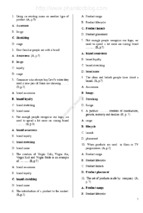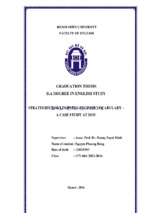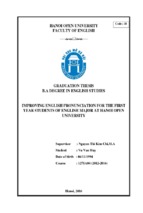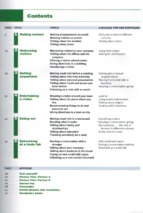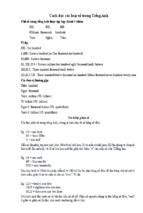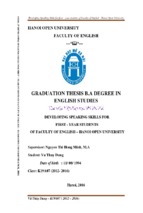MECHATRONICS
AN INTRODUCTION
© 2006 by Taylor & Francis Group, LLC
MECHATRONICS
AN INTRODUCTION
Robert H. Bishop
University of Texas at Austin
U.S.A.
Boca Raton London New York
A CRC title, part of the Taylor & Francis imprint, a member of the
Taylor & Francis Group, the academic division of T&F Informa plc.
© 2006 by Taylor & Francis Group, LLC
6358_Discl.fm Page 1 Wednesday, July 20, 2005 12:25 PM
Published in 2006 by
CRC Press
Taylor & Francis Group
6000 Broken Sound Parkway NW, Suite 300
Boca Raton, FL 33487-2742
© 2006 by Taylor & Francis Group, LLC
CRC Press is an imprint of Taylor & Francis Group
No claim to original U.S. Government works
Printed in the United States of America on acid-free paper
10 9 8 7 6 5 4 3 2 1
International Standard Book Number-10: 0-8493-6358-6 (Hardcover)
International Standard Book Number-13: 978-0-8493-6358-0 (Hardcover)
Library of Congress Card Number 2005049656
This book contains information obtained from authentic and highly regarded sources. Reprinted material is quoted with
permission, and sources are indicated. A wide variety of references are listed. Reasonable efforts have been made to publish
reliable data and information, but the author and the publisher cannot assume responsibility for the validity of all materials
or for the consequences of their use.
No part of this book may be reprinted, reproduced, transmitted, or utilized in any form by any electronic, mechanical, or
other means, now known or hereafter invented, including photocopying, microfilming, and recording, or in any information
storage or retrieval system, without written permission from the publishers.
For permission to photocopy or use material electronically from this work, please access www.copyright.com
(http://www.copyright.com/) or contact the Copyright Clearance Center, Inc. (CCC) 222 Rosewood Drive, Danvers, MA
01923, 978-750-8400. CCC is a not-for-profit organization that provides licenses and registration for a variety of users. For
organizations that have been granted a photocopy license by the CCC, a separate system of payment has been arranged.
Trademark Notice: Product or corporate names may be trademarks or registered trademarks, and are used only for
identification and explanation without intent to infringe.
Library of Congress Cataloging-in-Publication Data
Mechatronics : an introduction / edited by Robert H. Bishop.
p. cm.
ISBN 0-8493-6358-6 (alk. paper)
1. Mechatronics. I. Bishop, Robert H., 1957TJ163.12.M4315 2005
621.3--dc22
2005049656
Visit the Taylor & Francis Web site at
http://www.taylorandfrancis.com
Taylor & Francis Group
is the Academic Division of T&F Informa plc.
© 2006 by Taylor & Francis Group, LLC
and the CRC Press Web site at
http://www.crcpress.com
6358_C000.fm Page v Tuesday, August 9, 2005 8:21 AM
Preface
According to the original definition of mechatronics that the Yasakawa Electric Company proposed and
the definitions that have since appeared, many engineering products designed and manufactured in the
last thirty years that integrate mechanical and electrical systems can be classified as mechatronic systems.
In trademark application documents, Yasakawa defined mechatronics in this way:
The word mechatronics is composed of “mecha” from mechanism and the “tronics” from electronics.
In other words, technologies and developed products will be incorporating electronics more and
more intimately and organically into mechanisms, making it impossible to tell where one ends and
the other begins.
Where is mechatronics today? The advent of the microcomputer, embedded computers, and associated
information technologies and software advances have led to important advances in mechatronics. For
example, consider the automobile. In the early stages of automobile design, the radio was the only
significant electronics in it. All other functions were entirely mechanical or electrical. Today, there are
about 30–60 microcontrollers in a car. And with the drive to develop modular systems for plug-n-play
mechatronics subsystems, this is expected to increase.
Mechatronics: An Introduction provides an introduction to the vibrant field of mechatronics. As the
historical divisions between the various branches of engineering and computer science become less clearly
defined, the mechatronics specialty provides a roadmap for nontraditional engineering students studying
within the traditional structure of most engineering colleges. Evidently, mechatronics laboratories and
classes in the university environment are expanding world-wide. The list of contributors to this book
that includes authors from around the globe reflects this.
The material in Mechatronics: An Introduction appeared in a more complete form in The Mechatronics
Handbook that CRC Press and ISA-The Instrumentation, Systems, and Automation Society copublished.
The Mechatronics Handbook was conceived as a reference resource for research and development departments in academia, government, and industry, and for university libraries. It also was intended as a
resource for scholars interested in understanding and explaining the engineering design process. The
success of the full-scale handbook spawned the idea that a more condensed book, providing a general
impression of the subject, would benefit those searching for an overview of the mechatronics. This book
intends to serve this new audience.
Organization
Mechatronics: An Introduction is a collection of 21 articles covering the key elements of mechatronics:
a. Physical Systems Modeling
b. Sensors and Actuators
c. Signals and Systems
v
© 2006 by Taylor & Francis Group, LLC
6358_C000.fm Page vi Tuesday, August 9, 2005 8:21 AM
FIGURE 1
Key Elements of Mechatronics
d. Computers and Logic Systems
e. Software and Data Acquisition
The opening five articles define and organize mechatronics. These articles constitute an overview
introducing the key elements of mechatronics. Listed in order of appearance, the articles are:
•
•
•
•
•
What is Mechatronics?
Mechatronic Design Approach
System Interfacing, Instrumentation, and Control Systems
Microprocessor-Based Controllers and Microelectronics
An Introduction to Micro- and Nanotechnology
One of the main elements of mechatronics is physical system modeling. The next three articles discuss
an overview of the underlying mechanical and electrical mathematical models comprising most mechatronic systems, including the important topics of microelectromechanical systems (MEMS) and traditional electro-mechanical systems. Listed in order of appearance, the articles are:
• Modeling Electromechanical Systems
• Modeling and Simulation for MEMS
• The Physical Basis of Analogies in Physical System Models
The next three articles summarize the essential elements of sensors and actuators for mechatronics.
This section begins with an introduction to the subject and concludes with articles on the important
subjects of time and frequency, and on sensor and actuator characteristics. Listed in order of appearance,
the articles are:
• Introduction to Sensors and Actuators
• Fundamentals of Time and Frequency
• Sensor and Actuator Characteristics
vi
© 2006 by Taylor & Francis Group, LLC
6358_C000.fm Page vii Tuesday, August 9, 2005 8:21 AM
Signals and systems are key elements of any mechatronic system. Control systems and other subsystems
that comprise “smart products” are included in this general area of study. Since significant material on
the general subject of signals and systems is readily available to the reader, that material is not repeated
here. Instead, the next group of articles presents the relevant aspects of signals and systems of special
importance to the study of mechatronics. The articles describe the role of control in mechatronics and
the role of modeling in mechatronic design, and conclude with a discussion of design optimization.
Listed in order of appearance, the three articles are:
• The Role of Controls in Mechatronics
• The Role of Modeling in Mechatronics Design
• Design Optimization of Mechatronic Systems
The development of the computer has profoundly impacted the world. This is especially true in
mechatronics, where the integration of computers with electromechanical systems has led to a new
generation of smart products. The future is filled with promise of better and more intelligent products,
resulting from continued improvements in computer technology and software engineering. The last seven
articles of the book are devoted to the topics of computers and software. The next four articles focus on
computer hardware and associated issues of logic, communication, networking, interfacing, embedded
computers, and programmable logic controllers. Listed in order of appearance, the articles are:
•
•
•
•
Introduction to Computers and Logic Systems
System Interfaces
Communication and Computer Networks
Control with Embedded Computers and Programmable Logic Controllers
Since computers play a central role in modern mechatronics products, it is important to understand
how data is acquired and makes its way into the computer for processing and logging. The final three
articles focus on issues surrounding computer software and data acquisition. Listed in order of appearance, the articles are:
• Introduction to Data Acquisition
• Computer-Based Instrumentation Systems
• Software Design and Development
Acknowledgments
I wish to express my heartfelt thanks to all the contributing authors. I appreciate their taking time in
otherwise busy and hectic schedules to author the excellent articles appearing in Mechatronics: An
Introduction. I also wish to thank my advisory board for their help in the development of The Mechatronics
Handbook, the basis of the articles in this volume.
This book is a result of a collaborative effort that CRC Press expertly managed. My thanks to the
editorial and production staff:
Nora Konopka, Acquisitions Editor
Michael Buso, Project Coordinator
Susan Fox, Project Editor
vii
© 2006 by Taylor & Francis Group, LLC
6358_C000.fm Page viii Tuesday, August 9, 2005 8:21 AM
Thanks to my friend and collaborator Professor Richard C. Dorf for his continued support and
guidance. And finally, a special thanks to Lynda Bishop for managing the incoming and outgoing draft
manuscripts. Her organizational skills were invaluable to this project.
Robert H. Bishop
Editor-in-Chief
viii
© 2006 by Taylor & Francis Group, LLC
6358_C000.fm Page ix Tuesday, August 9, 2005 8:21 AM
Editor-in-Chief
Robert H. Bishop is a professor of aerospace engineering and
engineering mechanics at The University of Texas at Austin and
holds the Myron L. Begeman Fellowship in Engineering. He
received his B.S. and M.S. degrees from Texas A&M University in
aerospace engineering, and his Ph.D. from Rice University in electrical and computer engineering. Prior to joining The University
of Texas at Austin, he was a member of the technical staff at the
MIT Charles Stark Draper Laboratory. Dr. Bishop is a specialist in
the area of planetary exploration with an emphasis on spacecraft
guidance, navigation, and control. He is currently working with
NASA Johnson Space Center and the Jet Propulsion Laboratory on
techniques for achieving precision landing on Mars. He is an active
researcher, authoring and co-authoring over 50 journal and conference papers. The Boeing Company selected him two times as a
Faculty Fellow at the NASA Jet Propulsion Laboratory and a Welliver Faculty Fellow. Dr. Bishop co-authored Modern Control SysPhoto courtesy of Caroling Lee
tems with Prof. R. C. Dorf and he authored two other books,
entitled Learning with LabView and Modern Control System Design
and Analysis Using Matlab and Simulink. He recently received the John Leland Atwood Award from the
American Society of Engineering Educators and the American Institute of Aeronautics and Astronautics
that is periodically given to “a leader who has made lasting and significant contributions to aerospace
engineering education.”
ix
© 2006 by Taylor & Francis Group, LLC
6358_C000.fm Page xi Tuesday, August 9, 2005 8:21 AM
Contributors
M. Anjanappa
Neville Hogan
Ondrej Novak
University of Maryland
Baltimore, Maryland
Massachusetts Institute of
Technology
Cambridge, Massachusetts
Technical University of Liberec
Liberec, Czech Republic
Eric J. Barth
Vanderbilt University
Nashville, Tennessee
Peter Breedveld
University of Twente
Enschede, The Netherlands
Tomas Brezina
Technical University of Brno
Brno, Czech Republic
Kevin C. Craig
Cestmir Ondrusek
Rick Homkes
Purdue University
Kokomo, Indiana
Mohammad Ilyas
Florida Atlantic University
Boca Raton, Florida
Rolf Isermann
Darmstadt University of Technology
Darmstadt, Germany
Technical University of Brno
Brno, Czech Republic
Joey Parker
University of Alabama
Tuscaloosa, Alabama
Carla Purdy
University of Cincinnati
Cincinnati, Ohio
M. K. Ramasubramanian
Rensselaer Polytechnic Institute
Troy, New York
Hugh Jack
North Carolina State University
Raleigh, North Carolina
Jace Curtis
Grand Valley State University
Grand Rapids, Michigan
T. Song
National Instruments, Inc.
Austin, Texas
Jeffrey A. Jalkio
University of Maryland
Baltimore, Maryland
K. Datta
University of St. Thomas
St. Paul, Minnesota
Andrew Sterian
University of Maryland
Baltimore, Maryland
Ivan Dolezal
Technical University of Liberec
Liberec, Czech Republic
Kris Fuller
National Instruments, Inc.
Austin, Texas
J. Katupitiya
The University of New South Wales
Sydney, Australia
Ctirad Kratochvil
Technical University of Brno
Brno, Czech Republic
Michael A. Lombardi
Grand Valley State University
Grand Rapids, Michigan
Alvin Strauss
Vanderbilt University
Nashville, Tennessee
Fred Stolfi
Rensselaer Polytechnic Institute
Troy, New York
National Institute of Standards and
Technology
Boulder, Colorado
M. J. Tordon
Vanderbilt University
Nashville, Tennessee
Margaret H. Hamilton
Francis C. Moon
Job van Amerongen
Hamilton Technologies, Inc.
Cambridge, Massachusetts
Cornell University
Ithaca, New York
University of Twente
Enschede, The Netherlands
Michael Goldfarb
The University of New South Wales
Sydney, Australia
xi
© 2006 by Taylor & Francis Group, LLC
6358_C000.fm Page xiii Tuesday, August 9, 2005 8:21 AM
Contents
1
What is Mechatronics? Robert H. Bishop and
M. K. Ramasubramanian ........................................................................... 1- 1
2
Mechatronic Design Approach
3
System Interfacing, Instrumentation, and Control Systems
Rick Homkes .............................................................................................. 3- 1
4
Microprocessor-Based Controllers and Microelectronics
Ondrej Novak and Ivan Dolezal ................................................................. 4- 1
5
An Introduction to Micro- and Nanotechnology Michael Goldfarb,
Alvin Strauss, and Eric J. Barth ................................................................. 5- 1
6
Modeling Electromechanical Systems
Francis C. Moon........................... 6- 1
7
Modeling and Simulation for MEMS
Carla Purdy .................................. 7- 1
8
The Physical Basis of Analogies in Physical System Models
Neville Hogan and Peter C. Breedveld ........................................................ 8- 1
9
Introduction to Sensors and Actuators M. Anjanappa,
K. Datta, and T. Song ................................................................................ 9- 1
Rolf Isermann ......................................... 2- 1
10
Fundamentals of Time and Frequency
11
Sensor and Actuator Characteristics
12
The Role of Controls in Mechatronics
Michael A. Lombardi ................ 10- 1
Joey Parker .................................. 11- 1
Job van Amerongen................... 12- 1
xiii
© 2006 by Taylor & Francis Group, LLC
6358_C000.fm Page xiv Tuesday, August 9, 2005 8:21 AM
13
The Role of Modeling in Mechatronics Design
14
Design Optimization of Mechatronic Systems Tomas Brezina,
Ctirad Kratochvil, and Cestmir Ondrusek................................................. 14-1
15
Introduction to Computers and Logic Systems Kevin Craig and
Fred Stolfi ................................................................................................ 15-1
16
System Interfaces
17
Communications and Computer Networks
18
Control with Embedded Computers and Programmable
Logic Controllers Hugh Jack and Andrew Sterian ................................. 18-1
19
Introduction to Data Acquisition
20
Computer-Based Instr umentation Systems
21
Software Design and Development
Jeffrey A. Jalkio ........... 13-1
M.J. Tordon and J. Katupitiya ................................... 16-1
xiv
© 2006 by Taylor & Francis Group, LLC
Mohammad Ilyas............... 17-1
Jace Curtis ........................................ 19-1
Kris Fuller ......................... 20-1
Margaret H. Hamilton ................... 21-1
6358_C001.fm Page 1 Wednesday, May 25, 2005 11:21 AM
1
What is Mechatronics?
Robert H. Bishop
The University of Texas at Austin
1.1
1.2
1.3
1.4
M. K. Ramasubramanian
North Carolina State University
1.5
Basic Definitions................................................................. 1-1
Key Elements of Mechatronics.......................................... 1-2
Historical Perspective......................................................... 1-2
The Development of the Automobile
as a Mechatronic System.................................................... 1-6
What is Mechatronics? And What’s Next?........................ 1-9
Mechatronics is a natural stage in the evolutionary process of modern engineering design. The development of the computer, and then the microcomputer, embedded computers, and associated information
technologies and software advances, made mechatronics an imperative in the latter part of the twentieth
century. Standing at the threshold of the twenty-first century, with expected advances in integrated bioelectro-mechanical systems, quantum computers, nano- and pico-systems, and other unforeseen developments, the future of mechatronics is full of potential and bright possibilities.
1.1 Basic Definitions
The definition of mechatronics has evolved since the original definition by the Yasakawa Electric Company. In trademark application documents, Yasakawa defined mechatronics in this way [1,2]:
The word, mechatronics, is composed of “mecha” from mechanism and the “tronics” from electronics.
In other words, technologies and developed products will be incorporating electronics more and more
into mechanisms, intimately and organically, and making it impossible to tell where one ends and the
other begins.
The definition of mechatronics continued to evolve after Yasakawa suggested the original definition. One
oft quoted definition of mechatronics was presented by Harashima, Tomizuka, and Fukada in 1996 [3].
In their words, mechatronics is defined as
the synergistic integration of mechanical engineering, with electronics and intelligent computer control
in the design and manufacturing of industrial products and processes.
That same year, another definition was suggested by Auslander and Kempf [4]:
Mechatronics is the application of complex decision making to the operation of physical systems.
Yet another definition due to Shetty and Kolk appeared in 1997 [5]:
Mechatronics is a methodology used for the optimal design of electromechanical products.
More recently, we find the suggestion by W. Bolton [6]:
A mechatronic system is not just a marriage of electrical and mechanical systems and is more than
just a control system; it is a complete integration of all of them.
1-1
© 2006 by Taylor & Francis Group, LLC
6358_C001.fm Page 2 Wednesday, May 25, 2005 11:21 AM
1-2
Mechatronics: An Introduction
All of these definitions and statements about mechatronics are accurate and informative, yet each one
in and of itself fails to capture the totality of mechatronics. Despite continuing efforts to define mechatronics, to classify mechatronic products, and to develop a standard mechatronics curriculum, a consensus
opinion on an all-encompassing description of “what is mechatronics” eludes us. This lack of consensus
is a healthy sign. It says that the field is alive, that it is a youthful subject. Even without an unarguably
definitive description of mechatronics, engineers understand from the definitions given above and from
their own personal experiences the essence of the philosophy of mechatronics.
For many practicing engineers on the front line of engineering design, mechatronics is nothing new.
Many engineering products of the last 25 years integrated mechanical, electrical, and computer systems,
yet were designed by engineers that were never formally trained in mechatronics per se. It appears that
modern concurrent engineering design practices, now formally viewed as part of the mechatronics
specialty, are natural design processes. What is evident is that the study of mechatronics provides a
mechanism for scholars interested in understanding and explaining the engineering design process to
define, classify, organize, and integrate many aspects of product design into a coherent package. As the
historical divisions between mechanical, electrical, aerospace, chemical, civil, and computer engineering
become less clearly defined, we should take comfort in the existence of mechatronics as a field of study
in academia. The mechatronics specialty provides an educational path, that is, a roadmap, for engineering
students studying within the traditional structure of most engineering colleges. Mechatronics is generally
recognized worldwide as a vibrant area of study. Undergraduate and graduate programs in mechatronic
engineering are now offered in many universities. Refereed journals are being published and dedicated
conferences are being organized and are generally highly attended.
It should be understood that mechatronics is not just a convenient structure for investigative studies
by academicians; it is a way of life in modern engineering practice. The introduction of the microprocessor
in the early 1980s and the ever increasing desired performance to cost ratio revolutionized the paradigm
of engineering design. The number of new products being developed at the intersection of traditional
disciplines of engineering, computer science, and the natural sciences is ever increasing. New developments in these traditional disciplines are being absorbed into mechatronics design at an ever increasing
pace. The ongoing information technology revolution, advances in wireless communication, smart sensors design (enabled by MEMS technology), and embedded systems engineering ensures that the engineering design paradigm will continue to evolve in the early twenty-first century.
1.2 Key Elements of Mechatronics
The study of mechatronic systems can be divided into the following areas of specialty:
1.
2.
3.
4.
5.
Physical Systems Modeling
Sensors and Actuators
Signals and Systems
Computers and Logic Systems
Software and Data Acquisition
The key elements of mechatronics are illustrated in Figure 1.1. As the field of mechatronics continues to
mature, the list of relevant topics associated with the area will most certainly expand and evolve.
1.3 Historical Perspective
Attempts to construct automated mechanical systems has an interesting history. Actually, the term “automation” was not popularized until the 1940s when it was coined by the Ford Motor Company to denote
a process in which a machine transferred a sub-assembly item from one station to another and then
positioned the item precisely for additional assembly operations. But successful development of automated
mechanical systems occurred long before then. For example, early applications of automatic control
© 2006 by Taylor & Francis Group, LLC
6358_C001.fm Page 3 Wednesday, May 25, 2005 11:21 AM
1-3
What is Mechatronics?
MECHANICS OF SOLIDS
TRANSLATIONAL AND ROTATIONAL SYSTEMS
FLUID SYSTEMS
ELECTRICAL SYSTEMS
THERMAL SYSTEMS
MICRO- AND NANO-SYSTEMS
ROTATIONAL ELECTROMAGNETIC MEMS
PHYSICAL SYSTEM ANALOGIES
FUNDAMENTALS OF TIME AND FREQUENCY
SENSOR AND ACTUATOR CHARACTERISTICS
SENSORS
Linear and rotational sensors
Acceleration sensors
Force, torque, and pressure sensors
Flow sensors
Temperature measurements
Ranging and proximity sensing
Light detection, image, and vision systems
Fiber optic devices
Micro- and nanosensors
ACTUATORS
Electro-mechanical actuators
Motors: DC motors, AC motors, and stepper motors
Piezoelectric actuators
Pneumatic and hydraulic actuators
Micro- and nanoactuators
Physical System Modeling
Sensors and Actuators
MECHATRONICS
Software and
Data Acquisition
DATA ACQUISITION SYSTEMS
TRANSDUCERS AND MEASUREMENT SYSTEMS
A/D AND D/A CONVERSION
AMPLIFIERS AND SIGNAL CONDITIONING
COMPUTER-BASED INSTRUMENTATION SYSTEMS
SOFTWARE ENGINEERING
DATA RECORDING
FIGURE 1.1
MECHATRONICS MODELING
SIGNALS AND SYSTEMS IN MECHATRONICS
RESPONSE OF DYNAMIC SYSTEMS
ROOT LOCUS METHODS
FREQUENCY RESPONSE METHODS
STATE VARIABLE METHODS
STABILITY, CONTROLLABILITY, AND OBSERVABILITY
OBSERVERS AND KALMAN FILTERS
DESIGN OF DIGITAL FILTERS
OPTIMAL CONTROL DESIGN
ADAPTIVE AND NONLINEAR CONTROL DESIGN
NEURAL NETWORKS AND FUZZY SYSTEMS
INTELLIGENT CONTROL FOR MECHATRONICS
IDENTIFICATION AND DESIGN OPTIMIZATION
Signals and Systems
Computers and
Logic Systems
DIGITAL LOGIC
COMMUNICATION SYSTEMS
FAULT DETECTION
LOGIC SYSTEM DESIGN
ASYNCHRONOUS AND SYNCHRONOUS SEQUENTIAL LOGIC
COMPUTER ARCHITECTURES AND MICROPROCESSORS
SYSTEM INTERFACES
PROGRAMMABLE LOGIC CONTROLLERS
EMBEDDED CONTROL COMPUTERS
The key elements of mechatronics.
FIGURE 1.2 Water-level float regulator. (From Modern Control
Systems, 9th ed., R. C. Dorf and R. H. Bishop, Prentice-Hall, 2001.
Used with permission.)
systems appeared in Greece from 300 to 1 B.C. with the development of float regulator mechanisms [7].
Two important examples include the water clock of Ktesibios that used a float regulator, and an oil lamp
devised by Philon, which also used a float regulator to maintain a constant level of fuel oil. Later, in the
first century, Heron of Alexandria published a book entitled Pneumatica that described different types of
water-level mechanisms using float regulators.
In Europe and Russia, between seventeenth and nineteenth centuries, many important devices were
invented that would eventually contribute to mechatronics. Cornelis Drebbel (1572–1633) of Holland devised
the temperature regulator representing one of the first feedback systems of that era. Subsequently, Dennis
Papin (1647–1712) invented a pressure safety regulator for steam boilers in 1681. Papin’s pressure regulator
is similar to a modern-day pressure-cooker valve. The first mechanical calculating machine was invented by
Pascal in 1642 [8]. The first historical feedback system claimed by Russia was developed by Polzunov in 1765
[9]. Polzunov’s water-level float regulator, illustrated in Figure 1.2, employs a float that rises and lowers in
relation to the water level, thereby controlling the valve that covers the water inlet in the boiler.
Further evolution in automation was enabled by advancements in control theory traced back to the
Watt flyball governor of 1769. The flyball governor, illustrated in Figure 1.3, was used to control the
© 2006 by Taylor & Francis Group, LLC
6358_C001.fm Page 4 Wednesday, May 25, 2005 11:21 AM
1-4
Mechatronics: An Introduction
FIGURE 1.3 Watt’s flyball governor. (From Modern Control Systems, 9th ed., R. C. Dorf and R. H. Bishop, PrenticeHall, 2001. Used with permission.)
speed of a steam engine [10]. Employing a measurement of the speed of the output shaft and utilizing
the motion of the flyball to control the valve, the amount of steam entering the engine is controlled. As
the speed of the engine increases, the metal spheres on the governor apparatus rise and extend away from
the shaft axis, thereby closing the valve. This is an example of a feedback control system where the
feedback signal and the control actuation are completely coupled in the mechanical hardware.
These early successful automation developments were achieved through intuition, application of practical
skills, and persistence. The next step in the evolution of automation required a theory of automatic control.
The precursor to the numerically controlled (NC) machines for automated manufacturing (to be developed
in the 1950s and 60s at MIT) appeared in the early 1800s with the invention of feed-forward control of
weaving looms by Joseph Jacquard of France. In the late 1800s, the subject now known as control theory
was initiated by J. C. Maxwell through analysis of the set of differential equations describing the flyball
governor [11]. Maxwell investigated the effect various system parameters had on the system performance.
At about the same time, Vyshnegradskii formulated a mathematical theory of regulators [12]. In the 1830s,
Michael Faraday described the law of induction that would form the basis of the electric motor and the
electric dynamo. Subsequently, in the late 1880s, Nikola Tesla invented the alternating-current induction
motor. The basic idea of controlling a mechanical system automatically was firmly established by the end
of 1800s. The evolution of automation would accelerate significantly in the twentieth century.
The development of pneumatic control elements in the 1930s matured to a point of finding applications
in the process industries. However, prior to 1940, the design of control systems remained an art generally
characterized by trial-and-error methods. During the 1940s, continued advances in mathematical and
analytical methods solidified the notion of control engineering as an independent engineering discipline.
In the United States, the development of the telephone system and electronic feedback amplifiers spurred
the use of feedback by Bode, Nyquist, and Black at Bell Telephone Laboratories [13–17]. The operation
of the feedback amplifiers was described in the frequency domain and the ensuing design and analysis
practices are now generally classified as “classical control.” During the same time period, control theory
was also developing in Russia and eastern Europe. Mathematicians and applied mechanicians in the
former Soviet Union dominated the field of controls and concentrated on time domain formulations
and differential equation models of systems. Further developments of time domain formulations using
state variable system representations occurred in the 1960s and led to design and analysis practices now
generally classified as “modern control.”
The World War II war effort led to further advances in the theory and practice of automatic control
in an effort to design and construct automatic airplane pilots, gun-positioning systems, radar antenna
control systems, and other military systems. The complexity and expected performance of these military
systems necessitated an extension of the available control techniques and fostered interest in control
systems and the development of new insights and methods. Frequency domain techniques continued to
dominate the field of controls following World War II, with the increased use of the Laplace transform,
and the use of the so-called s-plane methods, such as designing control systems using root locus.
© 2006 by Taylor & Francis Group, LLC
6358_C001.fm Page 5 Wednesday, May 25, 2005 11:21 AM
What is Mechatronics?
1-5
On the commercial side, driven by cost savings achieved through mass production, automation of
the production process was a high priority beginning in the 1940s. During the 1950s, the invention of
the cam, linkages, and chain drives became the major enabling technologies for the invention of new
products and high-speed precision manufacturing and assembly. Examples include textile and printing
machines, paper converting machinery, and sewing machines. High-volume precision manufacturing
became a reality during this period. The automated paperboard container-manufacturing machine
employs a sheet-fed process wherein the paperboard is cut into a fan shape to form the tapered sidewall,
and wrapped around a mandrel. The seam is then heat sealed and held until cured. Another sheet-fed
source of paperboard is used to cut out the plate to form the bottom of the paperboard container,
formed into a shallow dish through scoring and creasing operations in a die, and assembled to the cup
shell. The lower edge of the cup shell is bent inwards over the edge of the bottom plate sidewall, and
heat-sealed under high pressure to prevent leaks and provide a precisely level edge for standup. The
brim is formed on the top to provide a ring-on-shell structure to provide the stiffness needed for its
functionality. All of these operations are carried out while the work piece undergoes a precision transfer
from one turret to another and is then ejected. The production rate of a typical machine averages over
200 cups per minute. The automated paperboard container manufacturing did not involve any nonmechanical system except an electric motor for driving the line shaft. These machines are typical of
paper converting and textile machinery and represent automated systems significantly more complex
than their predecessors.
The development of the microprocessor in the late 1960s led to early forms of computer control in
process and product design. Examples include numerically controlled (NC) machines and aircraft control
systems. Yet the manufacturing processes were still entirely mechanical in nature and the automation
and control systems were implemented only as an afterthought. The launch of Sputnik and the advent
of the space age provided yet another impetus to the continued development of controlled mechanical
systems. Missiles and space probes necessitated the development of complex, highly accurate control
systems. Furthermore, the need to minimize satellite mass (that is, to minimize the amount of fuel required
for the mission) while providing accurate control encouraged advancements in the important field of
optimal control. Time domain methods developed by Liapunov, Minorsky, and others, as well as the
theories of optimal control developed by L. S. Pontryagin in the former Soviet Union and R. Bellman in
the United States, were well matched with the increasing availability of high-speed computers and new
programming languages for scientific use.
Advancements in semiconductor and integrated circuits manufacturing led to the development of a
new class of products that incorporated mechanical and electronics in the system and required the two
together for their functionality. The term mechatronics was introduced by Yasakawa Electric in 1969 to
represent such systems. Yasakawa was granted a trademark in 1972, but after widespread usage of the
term, released its trademark rights in 1982 [1–3]. Initially, mechatronics referred to systems with only
mechanical systems and electrical components—no computation was involved. Examples of such systems
include the automatic sliding door, vending machines, and garage door openers.
In the late 1970s, the Japan Society for the Promotion of Machine Industry (JSPMI) classified mechatronics products into four categories [1]:
1. Class I: Primarily mechanical products with electronics incorporated to enhance functionality.
Examples include numerically controlled machine tools and variable speed drives in manufacturing machines.
2. Class II: Traditional mechanical systems with significantly updated internal devices incorporating
electronics. The external user interfaces are unaltered. Examples include the modern sewing
machine and automated manufacturing systems.
3. Class III: Systems that retain the functionality of the traditional mechanical system, but the internal
mechanisms are replaced by electronics. An example is the digital watch.
4. Class IV: Products designed with mechanical and electronic technologies through synergistic
integration. Examples include photocopiers, intelligent washers and dryers, rice cookers, and
automatic ovens.
© 2006 by Taylor & Francis Group, LLC
6358_C001.fm Page 6 Wednesday, May 25, 2005 11:21 AM
1-6
Mechatronics: An Introduction
The enabling technologies for each mechatronic product class illustrate the progression of electromechanical products in stride with developments in control theory, computation technologies, and microprocessors. Class I products were enabled by servo technology, power electronics, and control theory.
Class II products were enabled by the availability of early computational and memory devices and custom
circuit design capabilities. Class III products relied heavily on the microprocessor and integrated circuits
to replace mechanical systems. Finally, Class IV products marked the beginning of true mechatronic
systems, through integration of mechanical systems and electronics. It was not until the 1970s with the
development of the microprocessor by the Intel Corporation that integration of computational systems
with mechanical systems became practical.
The divide between classical control and modern control was significantly reduced in the 1980s with
the advent of “robust control” theory. It is now generally accepted that control engineering must consider
both the time domain and the frequency domain approaches simultaneously in the analysis and design
of control systems. Also, during the 1980s, the utilization of digital computers as integral components
of control systems became routine. There are literally hundreds of thousands of digital process control
computers installed worldwide [18,19]. Whatever definition of mechatronics one chooses to adopt, it is
evident that modern mechatronics involves computation as the central element. In fact, the incorporation
of the microprocessor to precisely modulate mechanical power and to adapt to changes in environment
are the essence of modern mechatronics and smart products.
1.4 The Development of the Automobile
as a Mechatronic System
The evolution of modern mechatronics can be illustrated with the example of the automobile. Until the
1960s, the radio was the only significant electronics in an automobile. All other functions were entirely
mechanical or electrical, such as the starter motor and the battery charging systems. There were no
“intelligent safety systems,” except augmenting the bumper and structural members to protect occupants
in case of accidents. Seat belts, introduced in the early 1960s, were aimed at improving occupant safety
and were completely mechanically actuated. All engine systems were controlled by the driver and/or other
mechanical control systems. For instance, before the introduction of sensors and microcontrollers, a
mechanical distributor was used to select the specific spark plug to fire when the fuel–air mixture was
compressed. The timing of the ignition was the control variable. The mechanically controlled combustion
process was not optimal in terms of fuel efficiency. Modeling of the combustion process showed that,
for increased fuel efficiency, there existed an optimal time when the fuel should be ignited. The timing
depends on load, speed, and other measurable quantities. The electronic ignition system was one of the
first mechatronic systems to be introduced in the automobile in the late 1970s. The electronic ignition
system consists of a crankshaft position sensor, camshaft position sensor, airflow rate, throttle position,
rate of throttle position change sensors, and a dedicated microcontroller determining the timing of the
spark plug firings. Early implementations involved only a Hall effect sensor to sense the position of the
rotor in the distributor accurately. Subsequent implementations eliminated the distributor completely
and directly controlled the firings utilizing a microprocessor.
The Antilock Brake System (ABS) was also introduced in the late 1970s in automobiles [20]. The ABS
works by sensing lockup of any of the wheels and then modulating the hydraulic pressure as needed to
minimize or eliminate sliding. The Traction Control System (TCS) was introduced in automobiles in the
mid-1990s. The TCS works by sensing slippage during acceleration and then modulating the power to
the slipping wheel. This process ensures that the vehicle is accelerating at the maximum possible rate
under given road and vehicle conditions. The Vehicle Dynamics Control (VDC) system was introduced
in automobiles in the late 1990s. The VDC works similar to the TCS with the addition of a yaw rate
sensor and a lateral accelerometer. The driver intention is determined by the steering wheel position and
then compared with the actual direction of motion. The TCS system is then activated to control the
© 2006 by Taylor & Francis Group, LLC
6358_C001.fm Page 7 Wednesday, May 25, 2005 11:21 AM
What is Mechatronics?
1-7
power to the wheels and to control the vehicle velocity and minimize the difference between the steering
wheel direction and the direction of the vehicle motion [20,21]. In some cases, the ABS is used to slow
down the vehicle to achieve desired control. In automobiles today, typically, 8, 16, or 32-bit CPUs are
used for implementation of the various control systems. The microcontroller has onboard memory
(EEPROM/EPROM), digital and analog inputs, A/D converters, pulse width modulation (PWM), timer
functions, such as event counting and pulse width measurement, prioritized inputs, and in some cases
digital signal processing. The 32-bit processor is used for engine management, transmission control, and
airbags; the 16-bit processor is used for the ABS, TCS, VDC, instrument cluster, and air conditioning
systems; the 8-bit processor is used for seat, mirror control, and window lift systems. Today, there are
about 30–60 microcontrollers in a car. This is expected to increase with the drive towards developing
modular systems for plug-n-ply mechatronics subsystems.
Mechatronics has become a necessity for product differentiation in automobiles. Since the basics of
internal combustion engine were worked out almost a century ago, differences in the engine design
among the various automobiles are no longer useful as a product differentiator. In the 1970s, the Japanese
automakers succeeded in establishing a foothold in the U.S. automobile market by offering unsurpassed
quality and fuel-efficient small automobiles. The quality of the vehicle was the product differentiator
through the 1980s. In the 1990s, consumers came to expect quality and reliability in automobiles from
all manufacturers. Today, mechatronic features have become the product differentiator in these traditionally mechanical systems. This is further accelerated by higher performance price ratio in electronics,
market demand for innovative products with smart features, and the drive to reduce cost of manufacturing of existing products through redesign incorporating mechatronics elements. With the prospects
of low single digit (2–3%) growth, automotive makers will be searching for high-tech features that will
differentiate their vehicles from others [22]. The automotive electronics market in North America, now
at about $20 billion, is expected to reach $28 billion by 2004 [22]. New applications of mechatronic
systems in the automotive world include semi-autonomous to fully autonomous automobiles, safety
enhancements, emission reduction, and other features including intelligent cruise control, and brake by
wire systems eliminating the hydraulics [23]. Another significant growth area that would benefit from a
mechatronics design approach is wireless networking of automobiles to ground stations and vehicle-tovehicle communication. Telematics, which combines audio, hands-free cell phone, navigation, Internet
connectivity, e-mail, and voice recognition, is perhaps the largest potential automotive growth area. In
fact, the use of electronics in automobiles is expected to increase at an annual rate of 6% per year over
the next five years, and the electronics functionality will double over the next five years [24].
Micro Electromechanical Systems (MEMS) is an enabling technology for the cost-effective development of sensors and actuators for mechatronics applications. Already, several MEMS devices are in use
in automobiles, including sensors and actuators for airbag deployment and pressure sensors for manifold
pressure measurement. Integrating MEMS devices with CMOS signal conditioning circuits on the same
silicon chip is another example of development of enabling technologies that will improve mechatronic
products, such as the automobile.
Millimeter wave radar technology has recently found applications in automobiles. The millimeter wave
radar detects the location of objects (other vehicles) in the scenery and the distance to the obstacle and
the velocity in real-time. A detailed description of a working system is given by Suzuki et al. [25]. Figure 1.4
shows an illustration of the vehicle-sensing capability with a millimeter-waver radar. This technology
provides the capability to control the distance between the vehicle and an obstacle (or another vehicle)
by integrating the sensor with the cruise control and ABS systems. The driver is able to set the speed and
the desired distance between the cars ahead of him. The ABS system and the cruise control system are
coupled together to safely achieve this remarkable capability. One logical extension of the obstacle
avoidance capability is slow speed semi-autonomous driving where the vehicle maintains a constant
distance from the vehicle ahead in traffic jam conditions. Fully autonomous vehicles are well within the
scope of mechatronics development within the next 20 years. Supporting investigations are underway in
many research centers on development of semi-autonomous cars with reactive path planning using GPSbased continuous traffic model updates and stop-and-go automation. A proposed sensing and control
© 2006 by Taylor & Francis Group, LLC
6358_C001.fm Page 8 Wednesday, May 25, 2005 11:21 AM
1-8
Mechatronics: An Introduction
FIGURE 1.4 Using a radar to measure distance and velocity to autonomously maintain desired distance between
vehicles. (Adapted from Modern Control Systems, 9th ed., R. C. Dorf and R. H. Bishop, Prentice-Hall, 2001. Used
with permission.)
FIGURE 1.5
Autonomous vehicle system design with sensors and actuators.
system for such a vehicle, shown in Figure 1.5, involves differential global positioning systems (DGPS),
real-time image processing, and dynamic path planning [26].
Future mechatronic systems on automobiles may include a fog-free windshield based on humidity
and temperature sensing and climate control, self-parallel parking, rear parking aid, lane change assistance,
fluidless electronic brake-by-wire, and replacement of hydraulic systems with electromechanical servo
systems. As the number of automobiles in the world increases, stricter emission standards are inevitable.
Mechatronic products will in all likelihood contribute to meet the challenges in emission control and
engine efficiency by providing substantial reduction in CO, NO, and HC emissions and increase in vehicle
© 2006 by Taylor & Francis Group, LLC
- Xem thêm -

